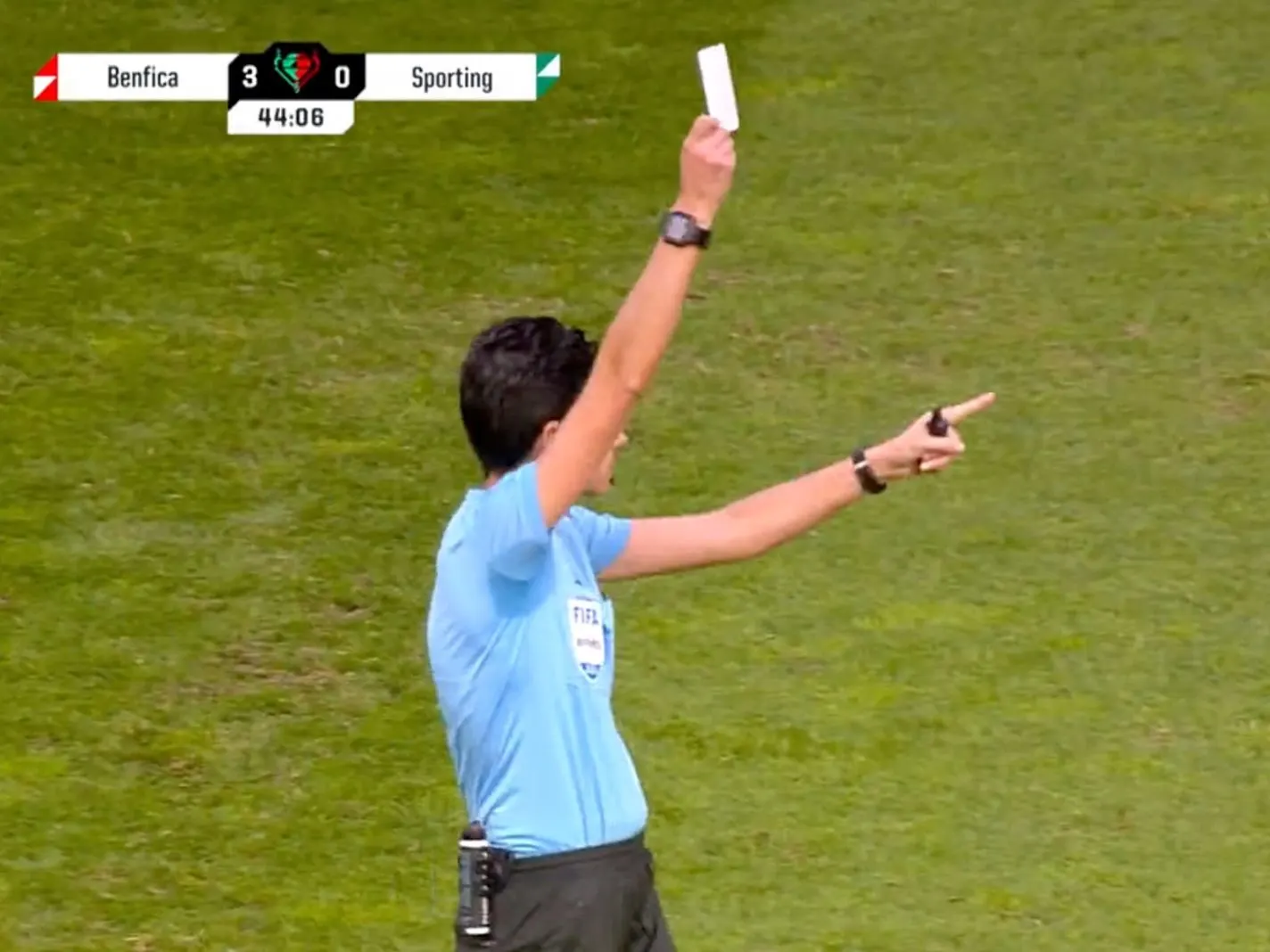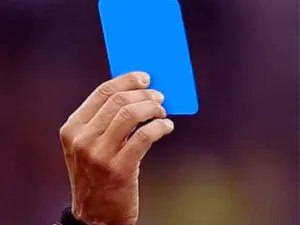Despite the enormous popularity of the sport and the vast reach of the game, the rules and regulations of football have changed relatively little since its inception.
For many years, the card system in football has stayed essentially untouched. Referees use yellow and red cards to indicate when a player has committed foul or unsportsmanlike behaviour.
Yellow cards serve as a warning to the player, while red cards result in ejection from the game, and may even result in being banned from future games.
Other sports, however, such as hockey, have updated their card system. In hockey, a player may be awarded a warning, a five-minute suspension, or an ejection. These several degrees of sanctions are meant to give a more sophisticated approach to dealing with rule infractions.
And now, finally, in 2023, football is perhaps changing as well.
A referee used a new and surprising White card for the first time in professional football during a women’s derby match between Benfica and Sporting Lisbon in Portugal.
This first-ever use of a white card in professional football was due to sportsmanship during the match.
The event occurred at the conclusion of the first half when a person in the dugout felt ill. Medical personnel from both sides came to the person’s help, demonstrating concern for the well-being of their teammate and opponent.
Observing the sportsmanship, the referee chose to brandish the white card to honour and reward the teams’ efforts to encourage fair play and respect for the other team. The usage of the white card in this context was intended to emphasise humanity in sports and the significance of caring for one another.
The crowd inside the Estadio da Luz applauded the deployment of the white card as a display of good sportsmanship and fair play. This case serves as a reminder that sports are about more than just winning at all costs; they are also about demonstrating respect and fair play to opponents.
The white card will basically be used to recognise and encourage positive behaviour such as fair play and respect for the other side. This new addition to the normal deck of cards is supposed to boost football’s overall ethical principles.
The use of this new card is an element of Portugal’s National Plan for Ethics in Sport (PNED), which aims to improve the sport’s ethical worth. The Portuguese Football Federation (FPF) has made this card available in all of its footballing events.
The lengthier stoppage time and concussion replacements, which grabbed attention during the matches of the FIFA World Cup in Qatar, are two further new measures that have been established in the nation.
The use of the white card has created much interest and debate among football fans and experts. On social media, there have been conflicting views on the idea.
Some internet users applaud the card’s message and regard it as a positive move toward establishing a respectful attitude in football. Others say that the card has no meaning in the setting of the actual competitive contest.
Some ideas for improvement have emerged, such as a positive reward for collecting multiple white cards. This would mirror the negative punishment that players get for stacking yellow cards.
An issue with this would be that teams would then fake “niceness” or force sportsmanlike behaviour just to get a white card, and if they aren’t given a white card then they might complain. In order to be truly ethical and honest, one must act for those reasons alone and not for the benefits one gets.
It will be fascinating to watch whether other European leagues follow suit. Now that the card has been used, it is possible that other officials will begin to use it when comparable scenarios arise throughout the match.







